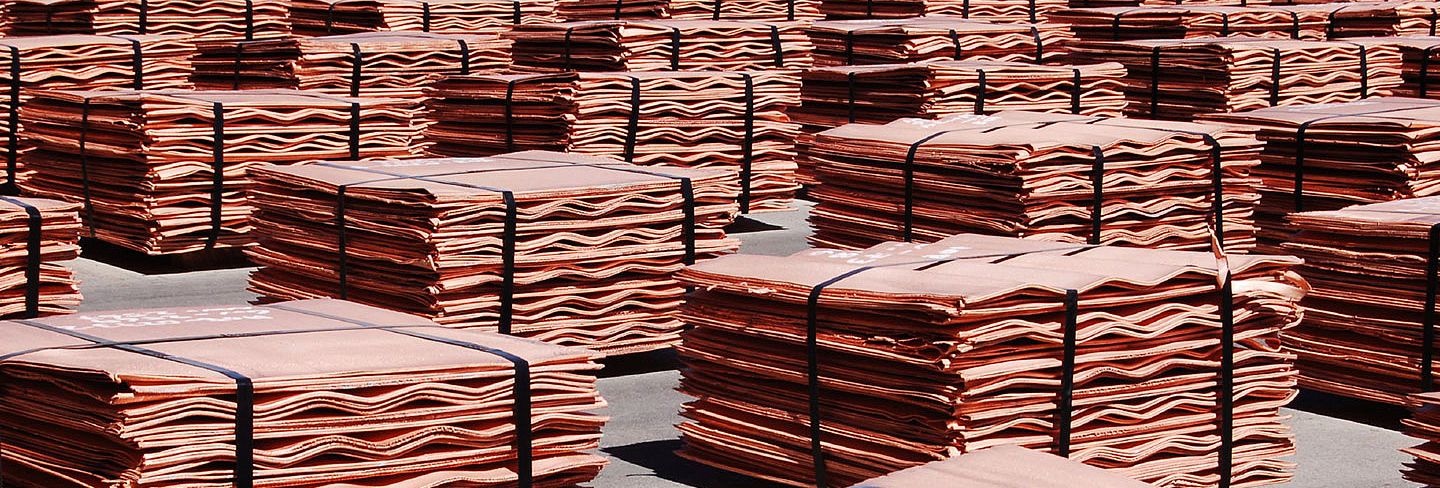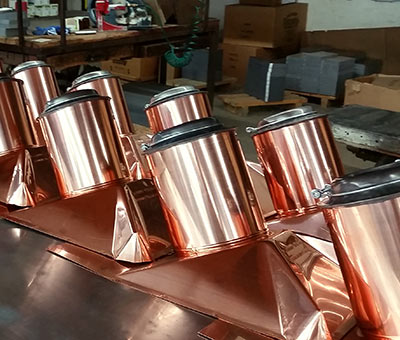Why Copper Products Are Important for Electric Applications and Efficient Electrical Wiring
Why Copper Products Are Important for Electric Applications and Efficient Electrical Wiring
Blog Article
Exactly How Copper Products Contribute to Lasting Practices in Numerous Fields
In sustainable power systems, for instance, copper improves the functionality of solar and wind innovations, while its application in building lessens waste through long life. As industries look for to take on more lasting techniques, the function of copper might confirm essential in accomplishing environmental objectives.
Copper in Renewable Resource
Copper plays a vital role in the innovation of renewable power technologies, serving as an important conductor in various applications. Its exceptional electric conductivity and resistance to rust make it an optimal product for electrical circuitry, which is vital in solar panels, wind generators, and energy storage space systems. In solar photovoltaic or pv systems, copper is utilized in the interconnections and wiring, making it possible for reliable energy conversion from sunshine to electrical power.
In wind power, copper is essential to the generators and transformers that convert kinetic energy into electric power, guaranteeing optimum efficiency and dependability. The demand for electrical automobiles (EVs) is enhancing, with copper being a key part in batteries, electric motors, and charging framework. The change to EVs significantly improves the demand for copper, as these lorries usually utilize four times more copper than conventional interior combustion engine lorries.
As the globe looks for to alleviate climate change and transition to lasting power resources, copper's duty becomes increasingly crucial. The product not just improves the performance and toughness of renewable resource systems but likewise supports the wider objective of minimizing greenhouse gas discharges and advertising a lasting future.
Eco-Friendly Building Materials
In the last few years, there has been a significant change in the direction of the adoption of environment-friendly construction materials in feedback to expanding environmental issues. This adjustment is motivated by the need for sustainable options that reduce eco-friendly footprints while maintaining architectural honesty and visual appeal.
Copper, recognized for its resilience and recyclability, has actually emerged as a crucial gamer in this field. It can be utilized in roof covering, plumbing, and electrical systems, contributing to energy efficiency and decreasing waste. Copper's durability implies fewer substitutes in time, more boosting its sustainability account.
In addition, products such as bamboo, recovered wood, and reused steel are acquiring popularity. These options not only provide decreased ecological impact however additionally advertise resource conservation. As constructing codes increasingly stress sustainability, builders and architects are integrating these products right into their tasks, promoting advancement in style.
The raising adoption of eco-friendly building products mirrors a wider dedication to sustainability in the constructed environment. By prioritizing these products, the construction market can dramatically reduce its carbon footprint, straighten with regulatory requirements, and sustain a healthier ecological community for future generations. This fad marks a pivotal action in the direction of a more sustainable future in building.
Copper's Duty in Medical care
Recent research studies have actually highlighted the significant function of copper in medical care settings, specifically as a result of its antimicrobial residential or commercial properties. Copper surfaces have been shown to lower the presence of virus, consisting of bacteria and infections, by as much as 99.9% within a brief period. This exceptional efficacy makes copper an indispensable product for high-touch surfaces in health centers, such as doorknobs, bed rails, and IV poles, thereby adding to boosted infection control actions.
In addition to its straight antimicrobial impacts, copper likewise contributes in the more comprehensive context of hospital sustainability (Copper Products). By including copper right into medical devices and home furnishings, health care centers can lower the incidence of healthcare-associated infections (HAIs), which not only boosts individual end results however also lowers the costs associated with prolonged health center remains and extra treatments
In addition, copper's durability and recyclability line up with lasting techniques, allowing for accountable source monitoring. As health care systems progressively prioritize both patient safety and environmental stewardship, the combination of copper items is ending up being more prevalent. This double benefit highlights copper's crucial payment to a much healthier, safer, and a lot more sustainable health care atmosphere.
Sustainability in Transportation

Additionally, copper's toughness and deterioration resistance contribute to the long life of transportation infrastructure (Copper Products). In rail systems, for example, copper elements enhance the integrity and effectiveness of signaling and power systems, important for lowering hold-ups and energy intake. Additionally, copper's function in renewable resource systems, such as solar useful content and wind, supports lasting transport services by supplying clean energy for electric transportation options
Investments in copper modern technology not just foster sustainability but also stimulate economic development and job creation in eco-friendly sectors. As markets make every effort to satisfy rigid environmental regulations, the application of copper products in transport becomes a pivotal strategy in accomplishing sustainability goals and promoting a cleaner, a lot more effective future.
Copper and Circular Economic Situation
As the world significantly welcomes sustainability, the duty of copper in the round economic climate comes to be ever more significant. Copper's inherent properties-- such as its durability, conductivity, and recyclability-- placement it as an essential material in a resource-efficient economy. The circular economic climate aims to decrease waste and make the most of resource usage with recycling and reusing materials, and copper excels in this respect.
The steel can be reused indefinitely without loss of top quality, making it a perfect prospect for lasting methods across various sectors, including building and construction, electronics, and sustainable power. By recouping and reprocessing copper from end-of-life items, sectors can considerably lower the demand for virgin products, thus reducing ecological influences connected with mining and processing.
Additionally, the assimilation of copper into round economic climate structures not only saves sources however likewise cultivates innovation. Businesses that focus on copper reusing add to an extra sustainable supply chain, boosting their competitiveness while aligning with governing demands and customer choices for eco liable products.
Conclusion
In final thought, copper products dramatically add to sustainable practices across index multiple sectors. Their necessary function in improving renewable resource innovations, advertising eco-friendly building and construction materials, sustaining infection control in healthcare, helping with sustainable transport, and personifying the principles of a round economic situation highlights the adaptability and value of copper. By integrating copper into various applications, industries can attain higher efficiency, reduce ecological impact, and align with worldwide sustainability goals, inevitably cultivating a much more lasting future.

Copper's outstanding conductivity makes it a preferred material in electrical vehicle (EV) systems, enhancing power efficiency and efficiency. In addition, copper's duty in site here sustainable power systems, such as solar and wind, supports lasting transportation remedies by offering clean power for electrical transit choices.
Their vital function in boosting eco-friendly energy innovations, promoting environmentally friendly building and construction products, supporting infection control in medical care, assisting in lasting transportation, and embodying the principles of a circular economic climate underscores the flexibility and relevance of copper.
Report this page